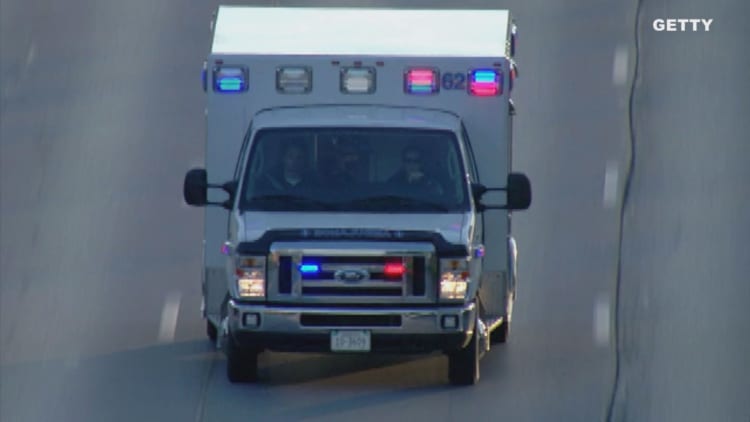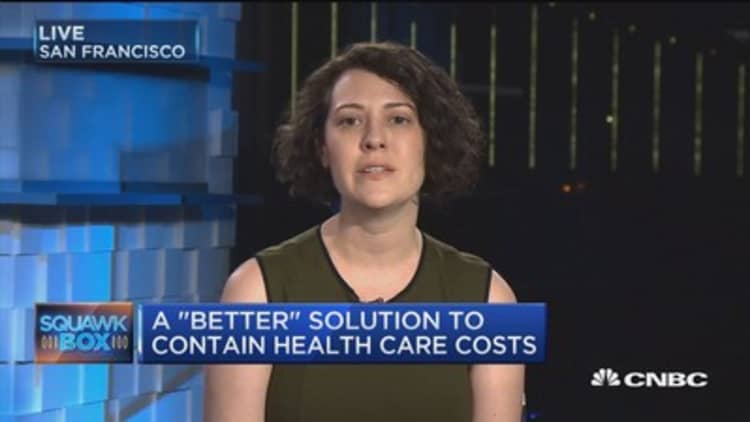
No matter how advanced medical technology gets, for many patients modern health care begins in a hospital emergency room and ends with an unexpectedly huge bill.
On average, emergency-room bills for out-of-network care is 4.4 times higher than what Medicare allows for the same services, costing consumers more than $3 billion a year, according to a nationwide study by the Johns Hopkins School of Medicine, recently published in the Journal of the American Medical Association Internal Medicine.
Put another way, emergency medicine physician charges came to about $4 billion versus $898 million in Medicare allowable amounts. Overall, the study found that emergency departments are charging anywhere from 1.0–12.6 times ($100–$12,600) more than what Medicare pays for services.
The greatest disparities were for those who lack insurance or have to go to a facility that's not in their health plan's network. The biggest overcharges were made to poor and minority patients, and the biggest gaps between charges for Medicare and uninsured patients were at for-profit hospitals, mostly in the Southeast and Midwest, the study said.
The service with the highest median markup ratio? Wound closures, at 7.0, while interpreting head CT scans had the greatest within-hospital pricing variation, with markup ratios ranging between 1.6 and 27.
General internal medicine physicians had a markup rate, compared to Medicare pricing, less than half what is billed by ER physicians. For a physician review of an electrocardiogram, the median Medicare allowable rate is $16, but emergency departments charged anywhere from $18 to $317, with a median charge of $95 (or a markup ratio of 6.0), the Johns Hopkins study found. General internal medicine doctors in hospitals charged an average of $62 for the same service.
A problem that's not going away
For the study, researchers analyzed the Medicare billing records for 12,337 emergency medicine physicians practicing in almost 300 hospitals in all 50 states in 2013 to determine how much emergency departments billed for services compared to the Medicare allowable amount (the sum of what Medicare pays, the deductible and coinsurance that patients pay, and the amount any third party such as the patient pays).
More from Modern Medicine:
The data that's fueling Joe Biden's cancer moonshot
Google's role in an emerging war against killer mosquitoes
Crisis in America: The organ transplant shortage
ER care may be the one place in the health system where consumers ask the fewest questions and get exploited on price the most, says Martin Makary, a Hopkins surgeon and professor of public health policy who was the lead investigator for the study.
"This is consistent with outlier stories we've always heard about seeking care out of network,'' Makary said. "Generally, these patients feeling like they're being treated as if they did something wrong. We can't expect people to live within a local network bubble and never leave."
This is a huge problem. Consumers are being overcharged, sometimes exorbitantly.Jenifer Boscostaff attorney at the National Consumer Law Center in Boston
The Johns Hopkins' data tracks a troubling pattern when it comes to ER billing. Health policy journal Health Affairs found in a 2016 study that 1 in 5 inpatient emergency-room cases result in surprise bills. A Kaiser Family Foundation survey last year found that among insured, non-elderly adults struggling to pay medical bills, charges from out-of-network providers were a contributing factor one-third of the time. And 7 in 10 individuals with unaffordable out-of-network medical bills did found that the provider wasn't in their plan's network when they received care.
The surprise bills are not going away. One reason: An investigation last month by the New York Times, including work done by Yale University researchers, found that some hospitals are outsourcing emergency-room services to out-of-network doctors groups and for-profit companies that aggressively hike prices.
"This is a huge problem," said Jenifer Bosco, staff attorney at the National Consumer Law Center in Boston. "Consumers are being overcharged, sometimes exorbitantly."
How to prevent huge ER bills
The real questions for consumers are: What can they do to prevent overcharges? How can they fight back? What rights do they have that they may not know about?
The advice is slightly different for insured and uninsured patients, Bosco said. Families with incomes low enough to qualify for the Medicaid expansion or for Obamacare subsidies have rights that don't always apply to wealthier patients.
Here are some key steps to protect yourself.
1. Get to a nonprofit hospital, if at all possible.
Depending on the emergency, this may not be practical, experts concede. But a provision of the Affordable Care Act, which wasn't yet in force in 2013, requires nonprofit hospitals to have written financial assistance policies and to limit charges for those who qualify for financial assistance to no more than the rates generally paid by other insurers, usually the Medicare rate, said Marie Watteau, a spokeswoman for the American Hospital Association.

"Hospital payments will vary because they reflect each individual hospital and the unique care needs of the patient population it serves," Watteau said in a statement. "One community may have sicker patients with more chronic illness, while another may care for more uninsured patients. Drawing information that is meaningful from a uniform set of charges is challenging because hospital care is individually tailored to each patient's needs."
For single Americans making $48,284 or less, or families with incomes below $92,000, this provision can limit the amount emergency rooms can charge, making a painful accident or illness hurt your wallet less. But for-profit hospitals aren't covered by the provision, Bosco said.
2. Ask for financial counseling at the ER.
Hospitals routinely have this service available, and it can be the key to learning your rights. On top of the Obamacare provision covering nonprofit hospitals, Medicaid-eligible patients are able to apply for coverage up to 10 days retroactively, Bosco said. That can cover nearly all of the unexpected bills for patients who make less than Medicaid cutoffs, about $33,900 for a family of four. (The cap varies by state.)
In addition, a counselor can explain that the ACA requires that Obamacare plans cover out-of-network ER care without co-pays over and above what in-network ERs charge — it's one of the essential health benefits the law requires subsidy-eligible plans to have. Most employer-provided plans have a similar provision.
3. After you get the bill, go back to the hospital or doctor and negotiate.
It's well known that providers give insurers, both private and public, big breaks on quoted rates. Uninsured or out-of-network patients initially get billed at so-called chargemaster rates. But Makary and Bosco agree that hospitals will rarely dig in to get the full price when challenged. If they do, they risk getting nothing for their services, so they are likely to cut the price and negotiate a payment plan. In addition, hospitals are getting better about prominently posting their financial-assistance policies in ERs, Bosco said.
"It's not a great solution," Bosco said. "But patients with a low income can ask for the Medicare or Medicaid rate.''
— By Tim Mullaney, special to CNBC.com




